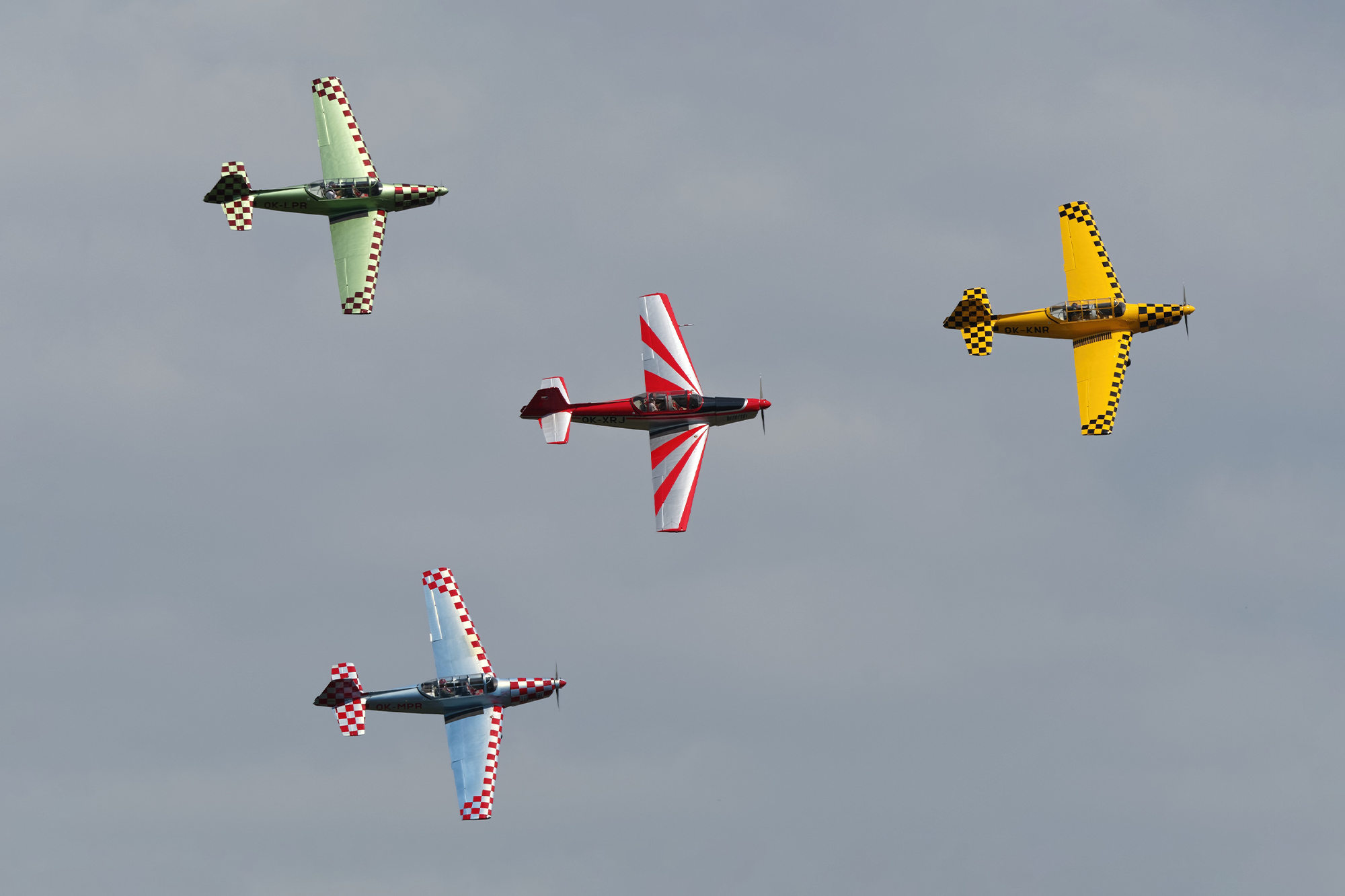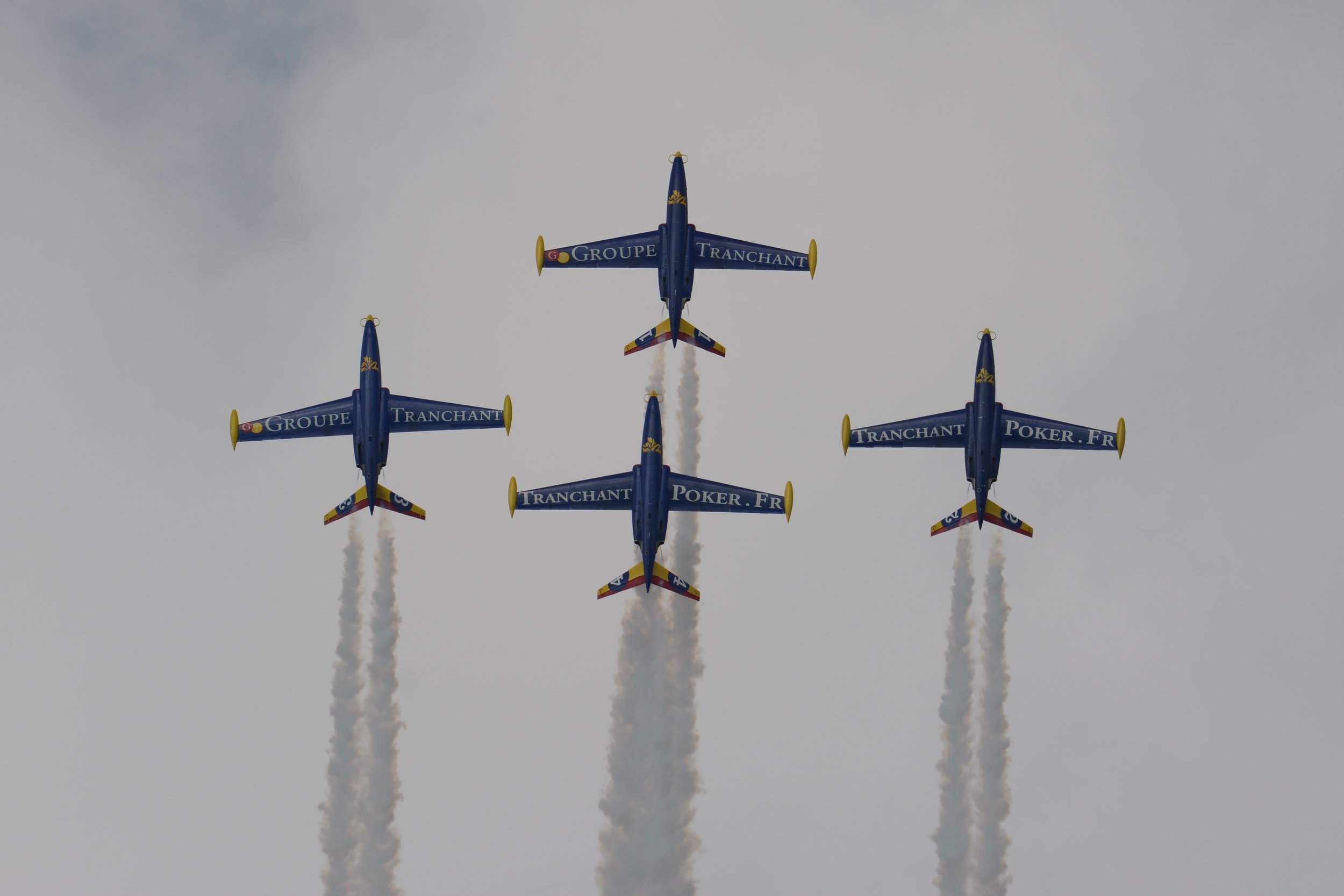Aerobatic Team Zelazny
Country
Poland
Size
2 to 6 Aircraft
Base
Kakolewo airfield
Zelazny Aerobatic Team, hailing from Poland, is a civilian aerobatic group proudly sponsored by Orlen, the Polish state oil refiner and petrol retailer. Renowned for their mesmerizing displays, Zelazny showcases breathtaking solo performances alongside captivating formations typically consisting of duos or trios, though they are proficient in executing displays with up to four aircraft, with ambitions to further expand in the near future. Boasting a diverse fleet, Zelazny's aircraft range from the sleek Extra 330LC to the classic Zlin 50 and Zlin 526 models. Beyond their dazzling airshow appearances, the team actively engages in various aviation endeavours, offering pilot training encompassing techniques for recovering from unusual situations, basic to advanced flying lessons, as well as coaching in higher levels of aerobatics, including advanced and unlimited manoeuvres. Since 2023, the Zelazny Aerobatic Team has expanded their repertoire to include captivating night-time aerobatic performances featuring mesmerizing wingtip pyrotechnics that illuminate the skies in a dazzling display of skill and precision.
| Back to Top |
Zlin Z-526F Trener-Master
The Z-526 was originally designed by Zlin Aircraft in 1959. Its two-seat version is called the Trener-Master The Z 526's layout was organized with the pilot in the rear and the student in front. The aircraft could be equipped also with tip tanks and a constant speed propeller. The Z-526F was introduced in 1968 and was equipped with a 135 kW (180 hp) Avia M 137A engine, the export version Z-526L differing by being equipped with a 150 kW (200 hp) Lycoming AEIO-360 flat-four. Single-seat versions included the Z-526A, Z-526AS, and the Z-526AFS. The Z-526 AFM was built between 1981 and 1984 and was powered by a 155 kW (210 hp) Avia M337 engine, which had tip tanks and a lengthened fuselage. The aircraft was later developed into the Zlin Z-726. More than 1,400 Z-526s were manufactured, many for military and private flying schools.
| Back to Top |
Extra 330LC
The Extra 300LC is a Lycoming AEIO-540-powered two-seat aircraft, with a low-mounted wing and shorter fuselage. More Extra 300L ("L" is a two-seater version) aircraft have been produced than any other model. Its wing is mounted at the bottom of the fuselage, with its span reduced from 26 to 24 ft (7.9 to 7.3 m). Improved ailerons boost the 300L's roll rate to 400° per second. All 300Ls are fully certified under FAA and European Joint Aviation Authorities regulations.
| Back to Top |
Zlin Z-50
The Zlin Z-50 is an aerobatic sports aircraft built by the Czechoslovakian company Zlin Aircraft. In autumn 1973 it was decided in Moravan Otrokovice to develop a new single-seat aerobatic aircraft. The design team was headed by Jan Mikula, a noted Czech designer. During the design phase, computer optimization was used to achieve the desired aerodynamic characteristics. The principal goal was to determine the optimum engine and propeller combination for this aircraft. Designers settled on the Lycoming AIO-540 D4B5 horizontally-opposed six-cylinder piston engine, rated at 194 kW (260 hp), driving a three-blade Hoffmann constant speed propeller.
The prototype Zlín Z-50L (L for its Lycoming engine), with civil registration OK-070, first flew 18 months after the start of design work, on 18 July 1975.The first flights were successful.
The Z-50L is a cantilever low-winged single-engined monoplane with a fixed tailwheel undercarriage. Unlike the Zlín Z 26 series which it replaced, the Z-50 was of all-metal construction, with limit manoeuvring load factors of +9.0 and -6.0. It does not incorporate landing flaps; in their place, two-section ailerons extend the full wingspan, providing an exceptional rate of roll. The designers made ample provision for trimming: automatic trim tabs are used on the inboard aileron sections; on one of the elevators and on the fabric-covered rudder; one outboard aileron has a ground-adjustable trim tab; the elevator has a trim tab which can be adjusted in-flight.
The standard fuel capacity can be supplemented by wingtip auxiliary tanks for ferry flights. The full-vision bubble canopy can be jettisoned in-flight if necessary.
The Zlín Z-50 made its competition debut at the 1976 World Aerobatic Championships, being flown by both the Czechoslovak and Polish teams, with a Czechoslovak Z-50 finishing in third place (behind two Soviet-flown Yakovlev Yak-50s), while the Czechoslovak team finished in second place in the team competition. In the 1978 championships, the Zlín was more successful, with Czech-flown Z-50s finishing first and third in the individual competition, and a German-flown Zlín finishing fourth, with the Czechoslovak team winning the team competition. Zlín Z-50s finished fourth in the 1980 championship, and third in the 1982 competition.
The Zlin Z-50LS, with a more powerful Lycoming AEIO-540 L1B5D engine of 224 kW (300 HP), was first flown by Zdenek Polasek on 29 July 1981. The more powerful engine enhanced vertical manoeuvres. The Zlin Z-50LS can fly at 760 kg gross weight in the aerobatic category (+8g to –6g). Many Z-50L and LA versions were rebuilt to Z-50LS standard in the early 1980s.
A Z-50LS won the World Aerobatic Championships in 1984 and 1986, but the debut of the Sukhoi Su-26 in 1986 eventually edged out the Zlin from world-class competition
Another version derived from the Zlin Z-50 aircraft is a "baby fifty" – Z-50M with a LOM M137AZ engine of 134 kW (180 HP). This was introduced as a replacement for the Z-526, which was often converted to N (normal) category and used as a glider tug at aero clubs. The Z-50M has limit manoeuvring load factors of +7 and -5,5. Only five Z-50M aircraft were built.
In April 1990 a Z-50LS received modified wings and was evaluated to determine if manoeuvrability was improved. The plane was designated Z-50LE (Experimental). This unit remained as a prototype and is currently in Moravska Trebova, at the Czech air school.
The last version of Zlin 50 is the Z-50LX, which first flew in 1991, piloted by Zlin chief pilot Vladimir Peroutka. This version received additional fuel tanks in the wings and a robust smoke system for airshow routines; it was produced principally at the urging of show pilot Victor Norman. From 1992 to 1995 seven Z-50LX were built, and four of them were used by the Red Bull Flying Bulls Aerobatics Team led by Radka Máchová.
Z-50LS are still in use; the Polish Aerobatic Team Zelazny uses 3 of them.











| Back to Top |

































